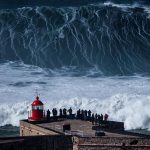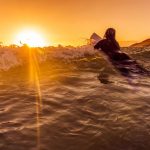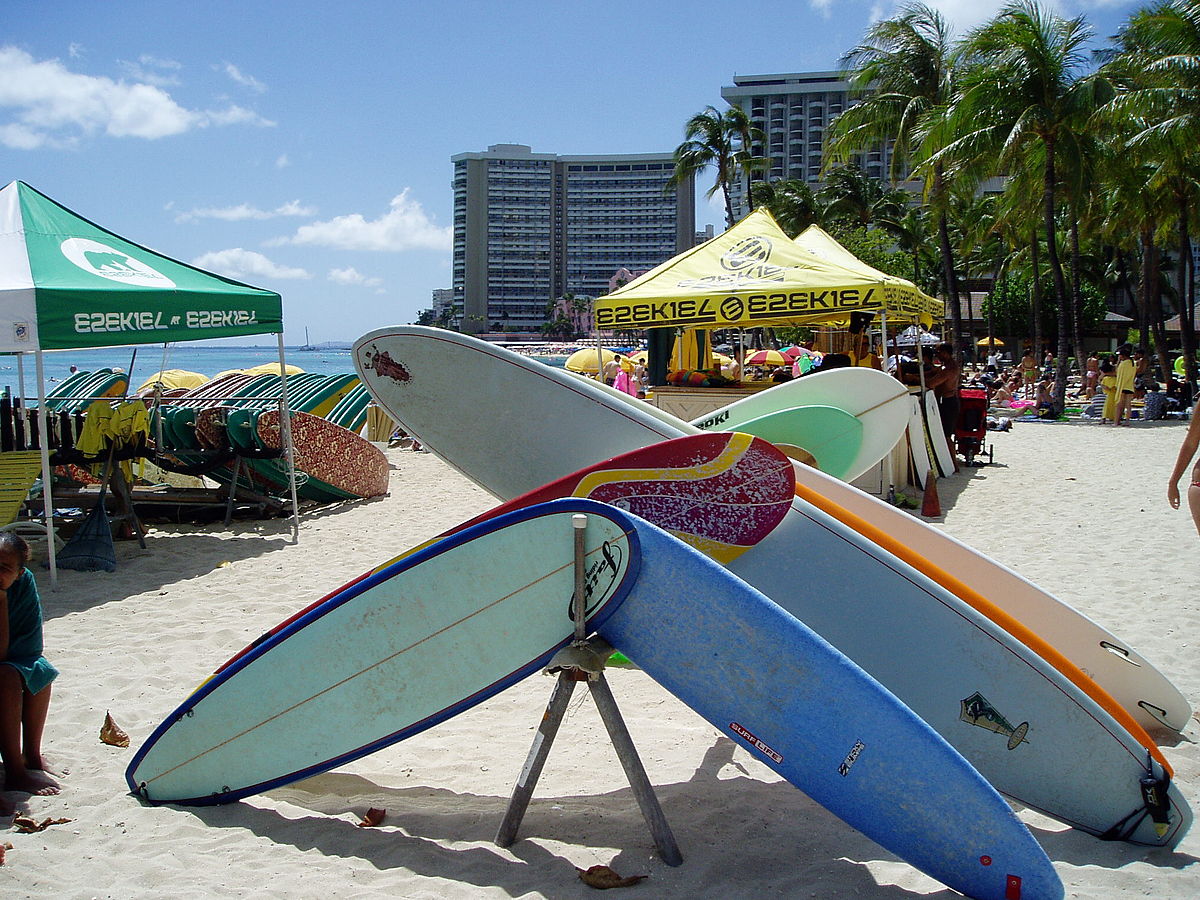If you are going to sail in the waters of Indonesia, Fiji, Hawaii or Tahiti, then this Heavywater gear will be the best choice for the trip.
The Heavywater simply needs extremely powerful and high tides, so welcome to the next level of surfing that you will achieve with Chilli Heavywater Surfboards.
Positive features of the Chilli Heawywater surfboard:
- Chilli Heawywater’s rocker allows you to make a lot of turns even on very steep maneuvers;
- The Chilli Heawywater’s tail is designed so that you can easily control the speed;
- The overall bottom of Chilli Heawywater allows you to jump on the fastest waves.
Negative traits of Chilli Heawywater:
- Heawywater is difficult to adjust to create turns;
- Chilli Heawywater has sophisticated design.
Best Tide Type: Chilli Heawywater fits great on large beaches where you can catch an overhead wave and even much higher. It also behaves well on high-speed reefs, where you can meet powerful water currents.
Below are three places to go with the Heavywater surfboard and enjoy one of your most powerful and powerful experiences on the water.
Table of Contents
Indonesia
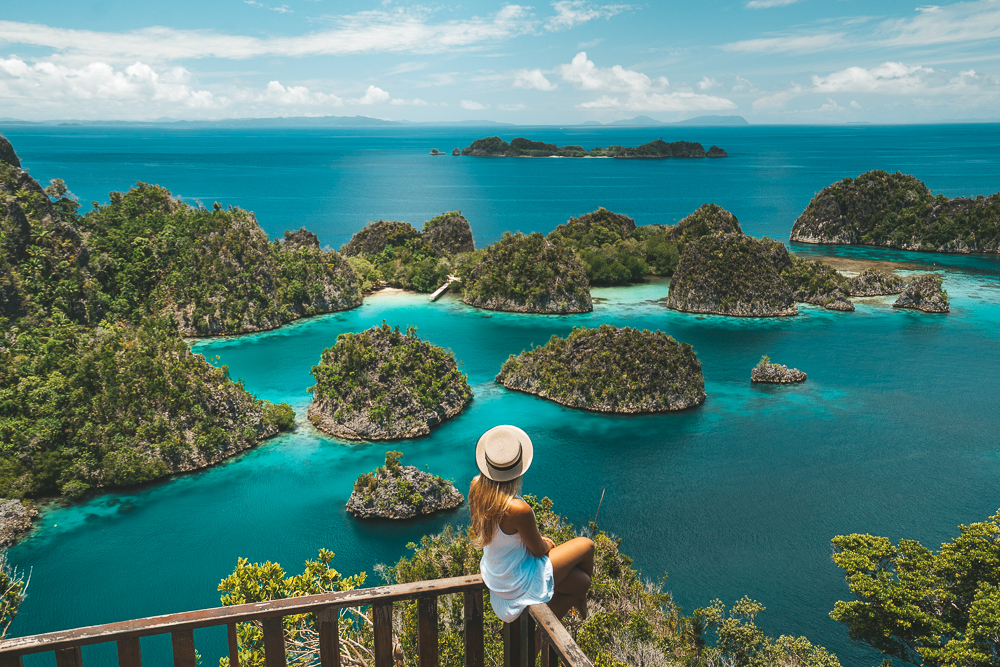
You can surf on Chilli Heavywater in Bali all year round, since the water in the ocean is always in the range of 25-28° C.
The peninsula is characterized by two seasons – dry and wet, which falls from November to March. Most rainfall occurs in the second half of winter, but this does not affect surfing in any way, since it usually rains at night.
During the dry season, the best time to surf with Chilli Heavywater is from June to October. In this period, the water gets colder and the waves are more suitable for surfing, so it is very important to wear a wetsuit.
You need to prepare for surfing with Chilli Heavywater Surfboard in advance. The prerequisites for a pleasant pastime include the following:
- The ability to swim and the presence of stamina. Before jumping on the tides, the surfer must swim to the lineup. Jumping during the first lessons is not given to everyone, which is why you have to re-get on the Heawywater surfboard many times. In this case, patience and diligence will be extremely appropriate.
- Sunscreen. As you know, water perfectly reflects the sun’s rays, which contributes to the rapid formation of tanning. To avoid burns, you must first apply a product with SPF and zinc content to the body.
- Insurance. Surfing is considered a fairly traumatic sport, so it is extremely important to take care of getting an insurance policy. This will be very important in case of bruises, scratches and dislocations.
- A protective lycra suit can be purchased at specialty stores such as Rip Curl or Billabong. They can also be found in the market in Kuta.
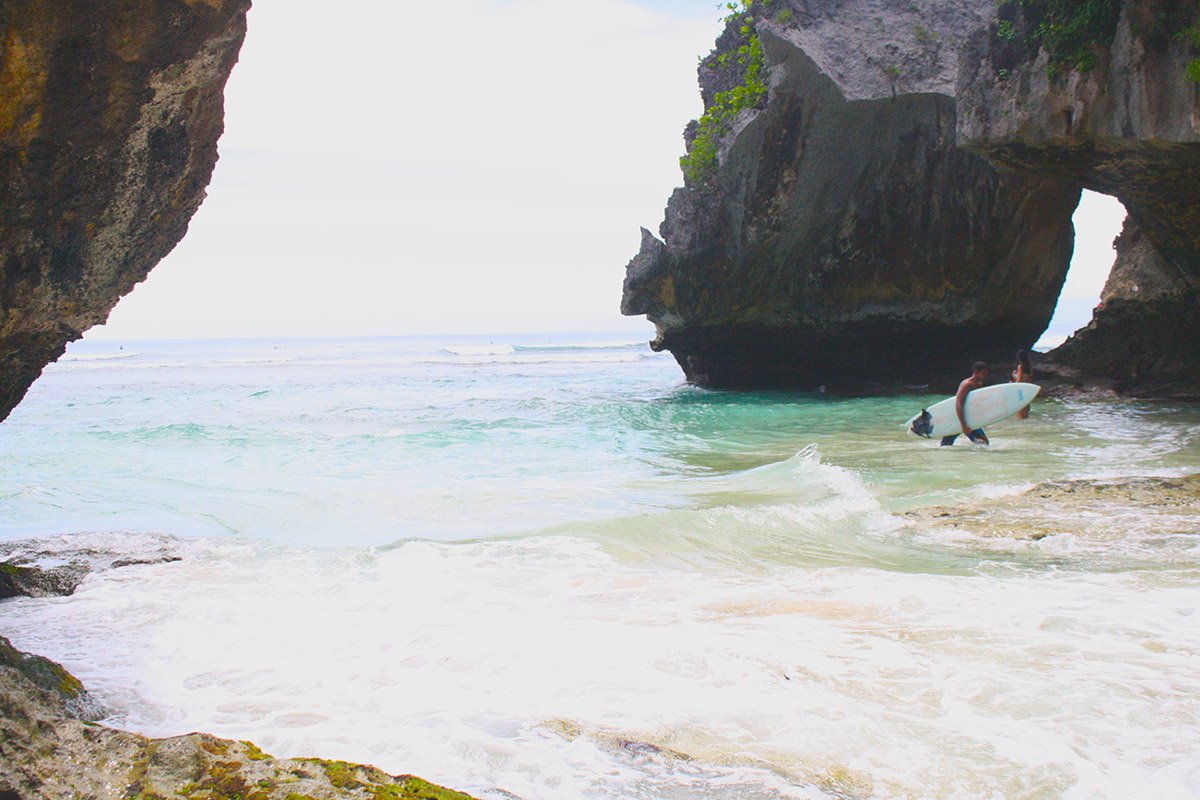
The most suitable beaches to Chilli Heavywater Surfboards are in the south of the Bukit Peninsula.
To beginners, it is advisable to go with Chilli Heavywater Surfboards to the beaches located on Kuta. They are distinguished by a sandy bottom, which reduces the risk of injury in the event of a fall.
In addition, the tides crash close to the shore.
Another important plus is that there are many Heawywater surfboard rental points and specialized shops for surfers on Kuta.
Kuta is suitable to surf with Chilli Heawywater surfboard all year round except for the rainy season, which is between December and February. Surfers prefer to move in these months to the more southern and eastern coastal areas – Keramas, Nusa Dua and Sunur.

Changu and Seminyak beaches are no less widespread among tourists, which resemble the appearance of the coastline of Kuta. Pros and beginners alike go here and can learn a lot from more experienced surfers.
Nusa Dua is considered a luxury resort to wealthy people, but the conditions here are not ideal for surfing.
Batu Bolong Beach is located in Canggu, which is characterized by long and slow waves. The lineup is far enough away, so it will take a long time to reach it.
Despite the presence of reefs, the beach is safe, as it is quite deep.
In the eastern part of Bukit resort there are Padang-Padang and Uluwatu beaches, which have spots for both experienced surfers and beginners.
For those who are familiar with surfing for a long time, there are spots with a high level of skiing, and less confident athletes should pay attention to spots with a short right tide.
Hawaii

Hawaii is a unique US state located more than 3,700 km from the mainland. Located in the Hawaiian archipelago of 24 islands and atolls.
The population of the state is representatives of different nationalities, since the Polynesians who originally lived here almost all died out due to infections brought by Europeans.
The Chinese, Japanese, Filipinos, and Germans who came to the islands (as workers) took root on the isle and, together with the surviving descendants of the Polynesians, became the progenitors of the new nationality “Hawaiians”.
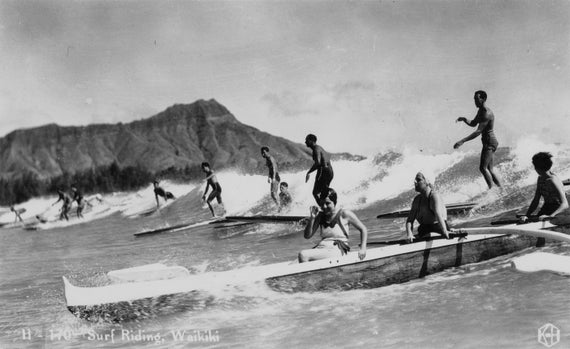
It was the indigenous Polynesians who introduced the whole world to the art of surf-riding, and now Hawaii is considered the birthplace of this sport.
For tens of centuries, the ability to ride a surfboard was welcomed among the nobility of local tribes, even kings and elders got up on homemade surfboards.
Now surf-riding with Heavywater there is not just a sport, but a necessary skill in life, so it was even introduced into the compulsory school curriculum.
Almost every beach there is ski-friendly, with the exception of bays where military bases or major ports are located.
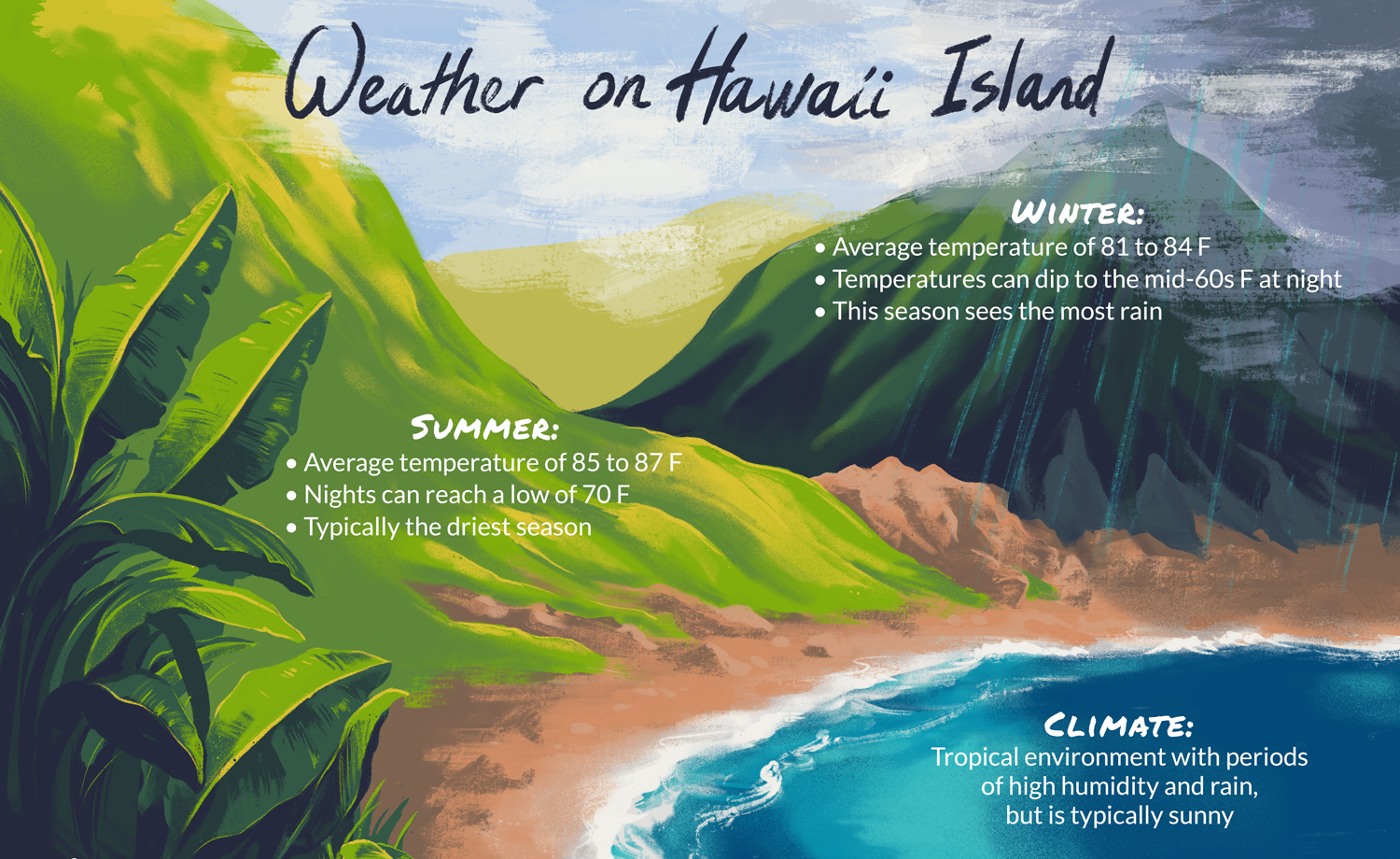
The climate in Hawaii is tropical trade wind, with no noticeable changes in temperature and humidity throughout the year.
At the same time on two neighboring spots(or even on two halves of one place), the weather may be different: one is dry, and the other is raining briefly.
This is due to the presence of mountains and valleys that change the direction of the wind on the spots.
The Hawaiian year is conventionally subdivided into winter (November – April) and summer (May – October). At the same time, the temperature in winter is kept near + 24 + 26° С, and in summer + 30 + 34° С (maximum – in July and August).
Precipitation occurs in all seasons. The ocean water temperature is stable all year round + 24 + 27 ° С, so its value is not even announced in local weather forecasts.
And at the same time in winter in the high mountains on the isle it sometimes snows and even lies, although on the coast on the same days tourists are sunbathing and swimming.
They ride the Chilli Heawywater surfboards here all year round, but winter is considered the best surf-riding season, that is, from October-November to March-April. During this period, the number of bathers on the shore decreases, and the waves roll in more steadily.
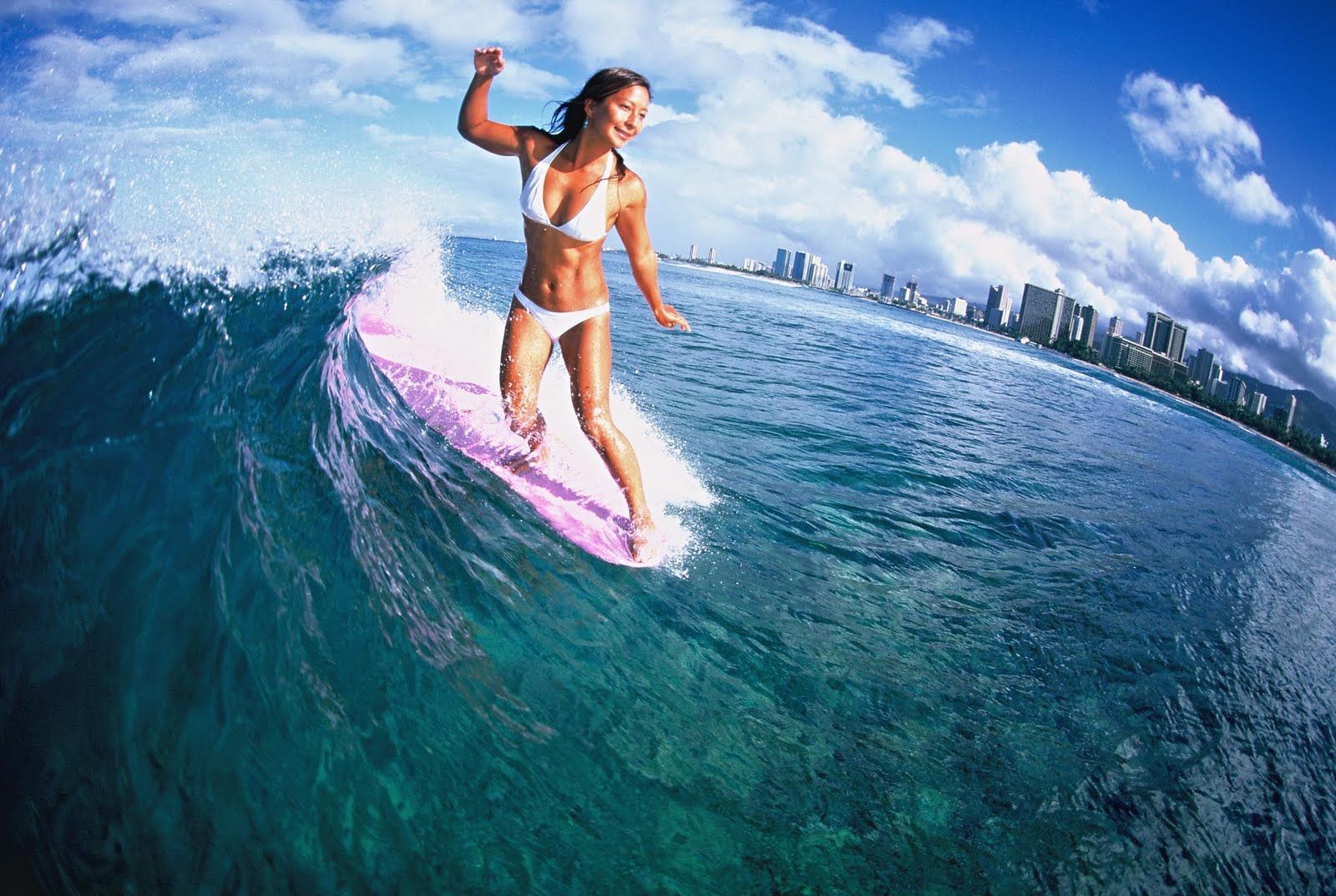
Almost the entire coast of the state is suitable for surf-riding, but it was developed on four large spots:
- Hawaii is an isle of seven volcanoes, including active ones. The largest, but not the most popular place among ordinary tourists, and thus attractive to surfers.
- Maui is the second largest isle. Formed by two volcanoes, which create a strong wind between them. It is not possible to ride on every spot at any time, the ragged wind often interferes. On windless days, the shores are full of surfers catching waves up to 5 meters high. Notable spots: Hookiep, Kanaha, Honoluay.
- Oahu is the central isle of the archipelago, where not only the state capital, Honolulu, is located, but also the naval base at Pearl Harbor, as well as the International Tsunami Warning Service. If you look at the map of Oahu surf spots, you can see that they are located along the entire coast of the isle , except for its southwestern part, where Pearl Harbor is located. Ideal conditions for advanced surfers have been created on the North Coast, for example, the Spot Pipeline, where international competitions are held in December.
- Kauai is the “island of the garden”, known for its twenty waterfalls and picturesque canyons. It was on Kauai that Cook first landed in 1778 when the Hawaiian Islands were discovered. Most of the tourists and surfers who come to Kauai are American.
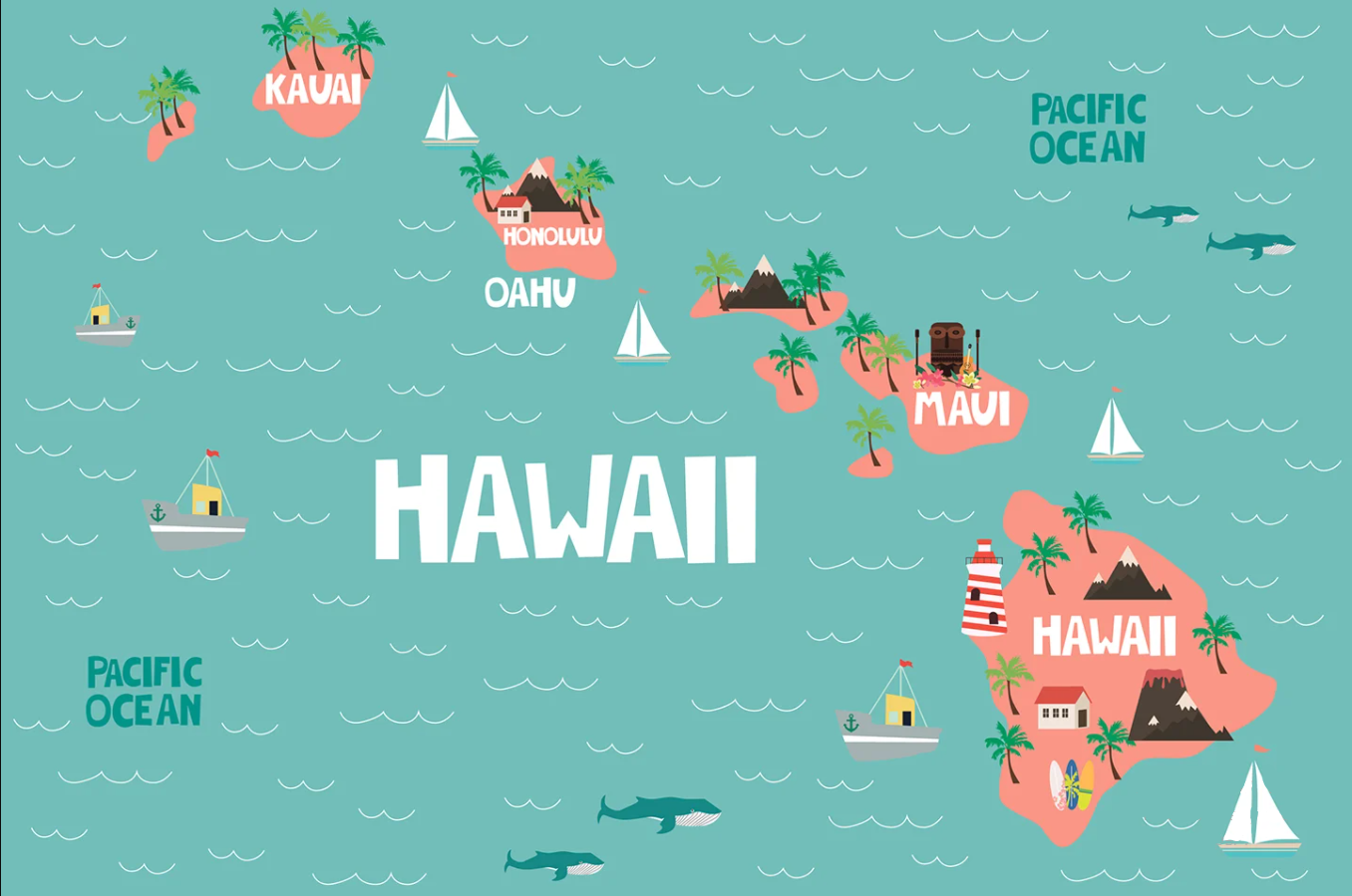
Finding a surf school in Hawaii is easy, with most of them focused on Oahu and Maui. The most popular surf spot where beginners are always welcome is Waikiki Beach in downtown Honolulu.
The conditions are suitable for beginners, but there are always a lot of people. Experienced athletes prefer less noisy beaches and spots.
In Hawaii, you can meet Russian-speaking instructors and even representatives of Russian surfing schools. Most of them operate on the basis of Hawaiian surf schools and camps.
Their number is small, so it is worth booking a surf tour in advance with accommodation in a Russian camp, especially in the winter period November-April.
The cost of a one-time individual lesson with Russian instructors is $ 150, training within a group is $ 75. Surf Camp Accommodation – $ 200 per day, including accommodation, lesson, Heavywater surfboard rental and airport transfers.
Hawaii is not the safest place on earth to tourists. There are several active volcanoes, and they are also found under water.
The possibility of a tsunami is not excluded – a huge wave that occurs after underground earthquakes. Small tsunamis (waves 1–2 m high and several kilometers long) regularly visit the Hawaiian coasts.
In such cases, the Tsunami Warning Center activates an audible siren in advance so that people can evacuate on a hill and wait out the danger there.
Fiji
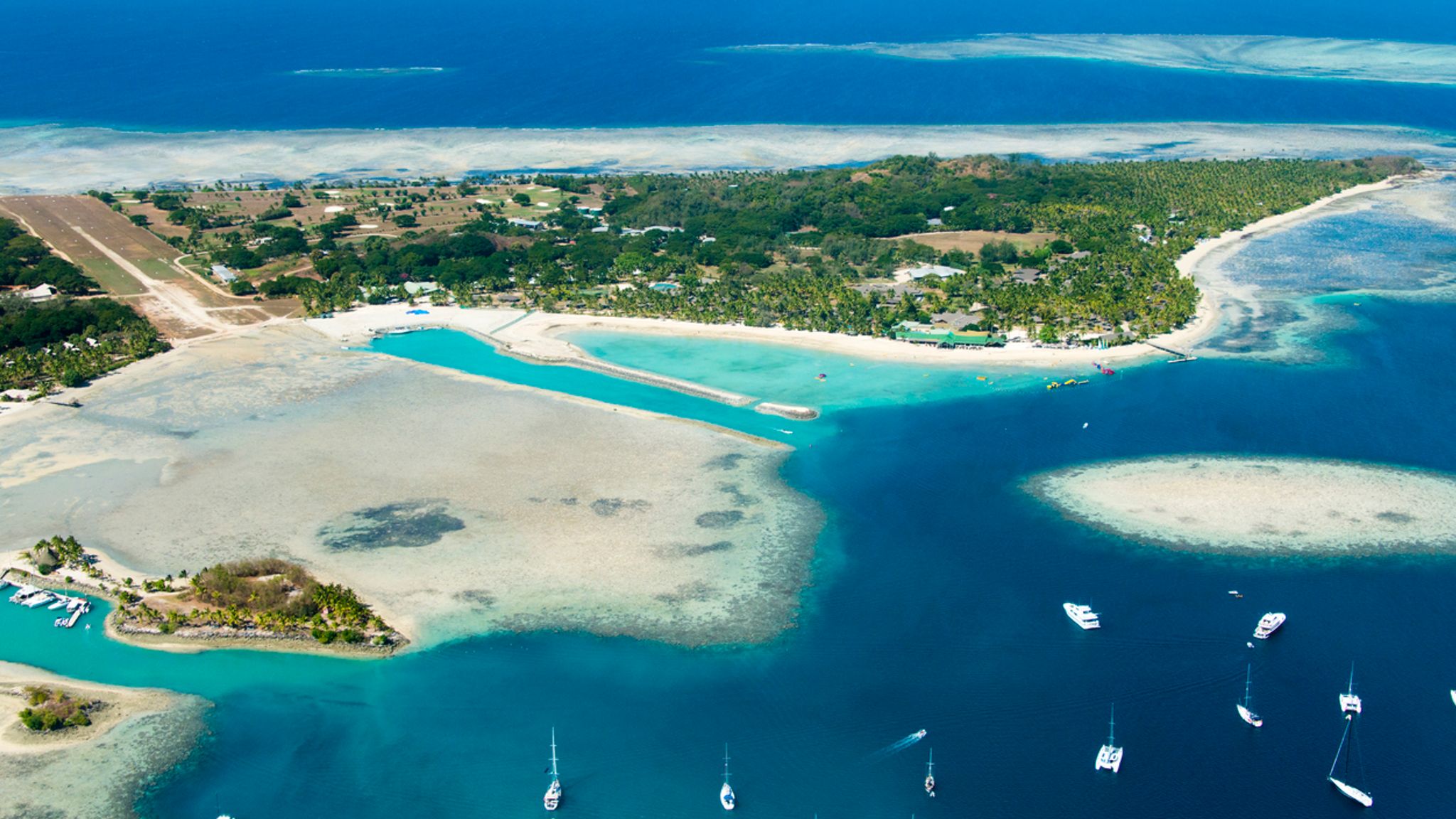
The Pacific state of Fiji, consisting of coral and volcanic places, has been developing eco-tourism in its country to several decades.
High waves attract surfers from all over the world here, in addition, among the 332 islands, you can choose a spot that suits any athlete’s request.
It is not necessary to bring Heawywater surfboards with you, the islands have all the infrastructure necessary to water sports.
Tourists prefer to stay on the largest islands of the state – the capital Viti Levu and Vanua Levu.
Athletes who come to Fiji just for the sake of the wave also stop at Tavarua isle. It is small, but famous all over the world because of its Cloudbreak wave.
First of all, advanced surfers and professionals come to Fiji, since most of the spots here are reef, which is not suitable to beginners and unsure skiers.
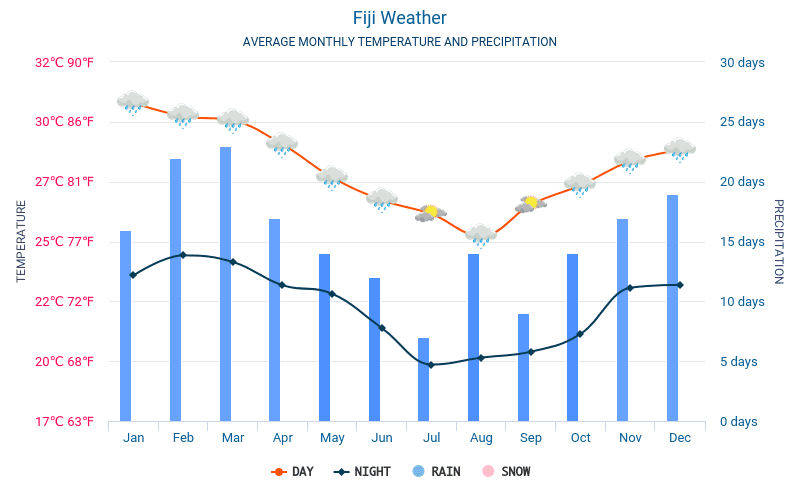
Fiji is dominated by a tropical climate, which is characterized by a division into dry and wet periods.
The high tourist season is during the dry season, which lasts from May to October. Air temperature + 23 + 25°С.
From November to April, the islands are covered with a wave of rains and downpours. The air warms up to + 25 + 27°С (sometimes up to +32°С).
Fiji is on the path of tropical cyclones, the force of which can trigger landslides and floods. This usually happens in the winter, during the rains.
The surfing season in Fiji starts in March and lasts until October. At this time, favorable weather sets in, the rains decrease and gradually stop, the waves reach 3-6 m.
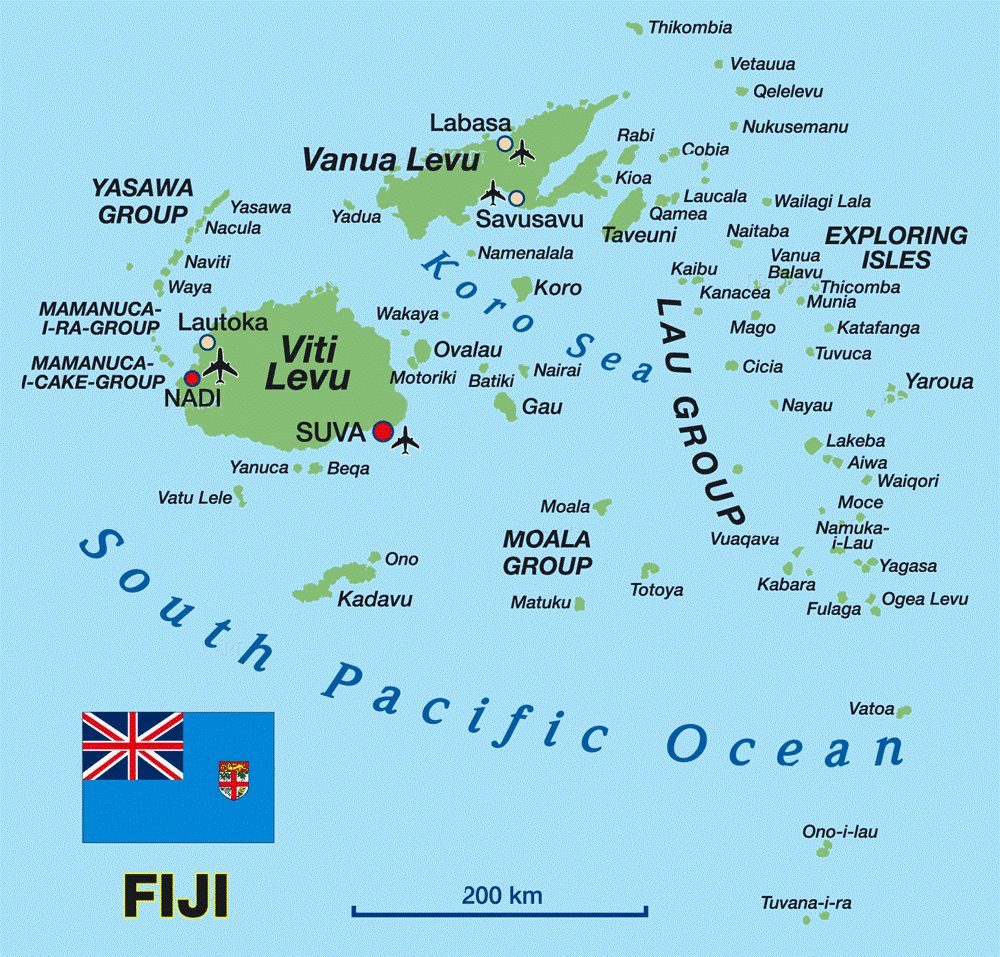
The Fiji Islands are of volcanic and coral origin, so their coastal strips are dotted with rocks and sharp corals.
Most surf spots are located at some distance from the coast, where there is minimal risk of injury on the reefs or breaking on boulders.
Interestingly, until recently, access to surf spots in Fiji was paid. Only recently, the authorities opened free access to surfers in the hope of increasing the tourist flow and, accordingly, to boost the economy in the country.
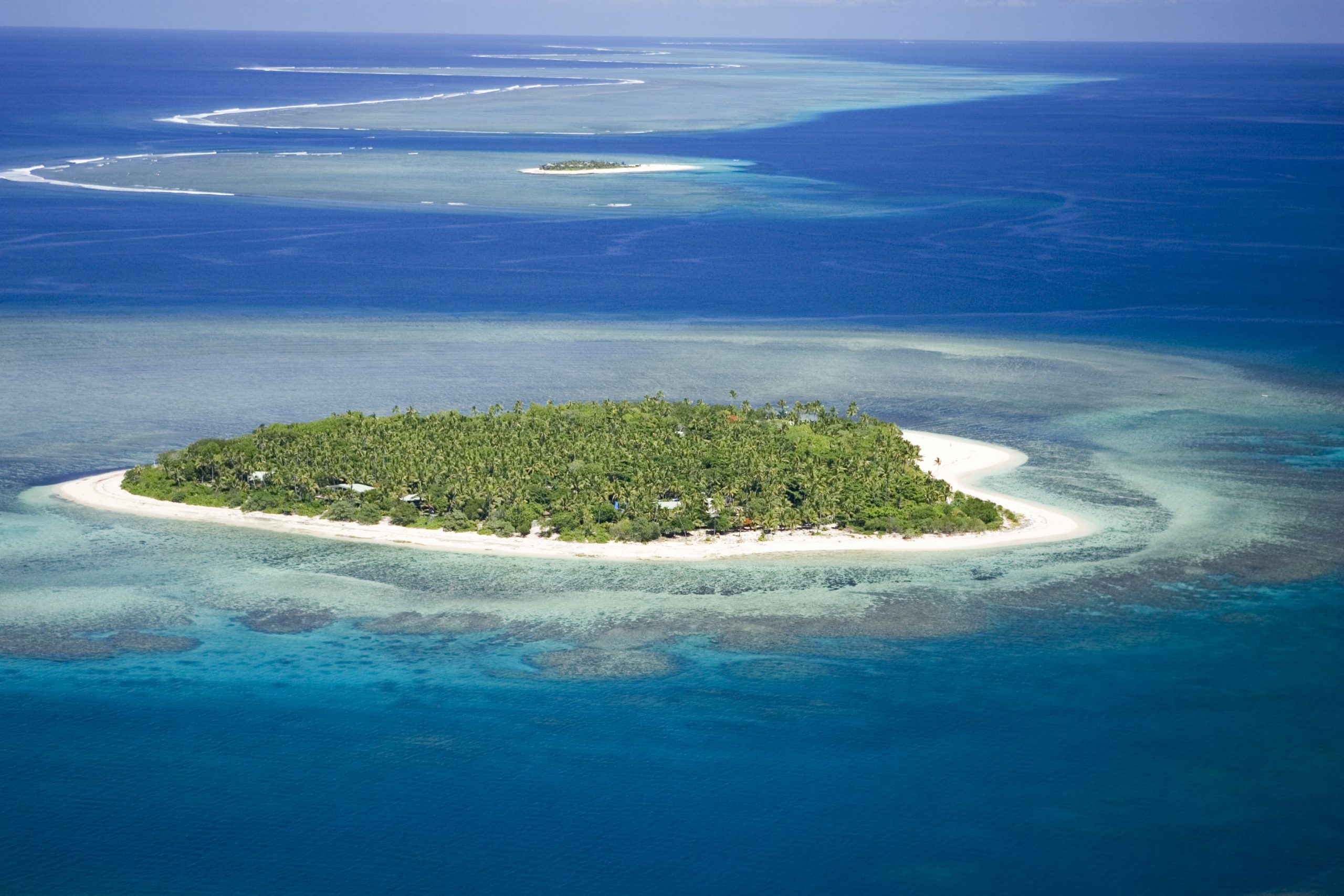
Tavarua is a small, but most famous isle of the Fiji archipelago among surfers.
There is no choice of hotels, supermarkets, water parks – the tourist infrastructure is not developed. Despite this, new surfers arrive on the isle every day.
The answer lies in several different breaks located on and near the island: Desperation, Swimming Pool and others. But Cloudbreak’s six-meter break surpasses all popular spots in Fiji.
Only experienced and fearless athletes should come to it, not only because of the height and complexity of the wave, but also because of the shallow sharp reefs.
Cloudbreak hosts the Oceania Cup, an annual surfing competition.
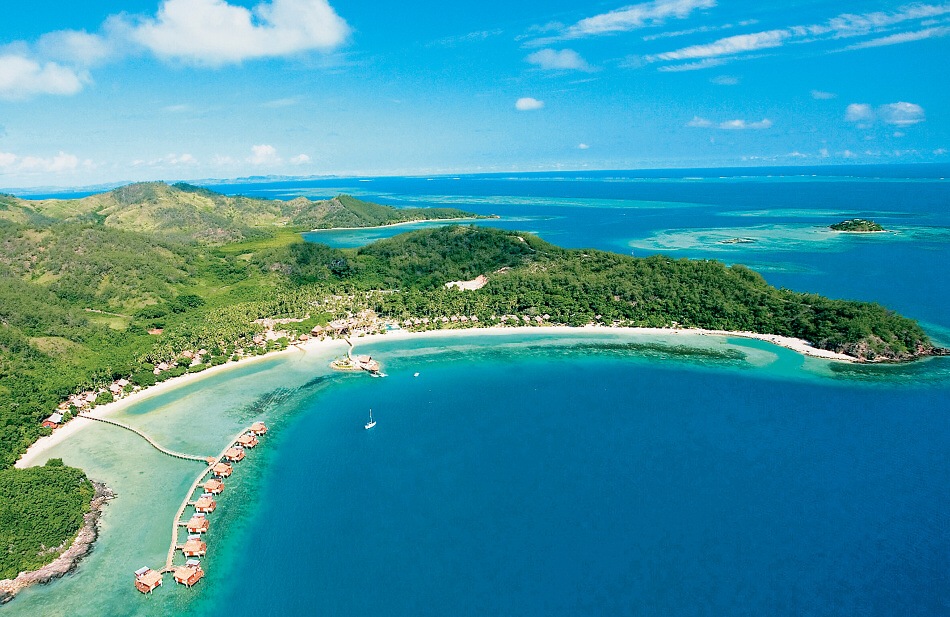
Viti Levu is the capital island. The largest and most popular isle in Fiji.
More than 70% of local residents live in Viti Levu. The capital of the state, the city of Suva, is also the center of surfing life.
You can ride the waves both in the capital itself and in its surroundings; the southern coast is perfect to this.
The west bank is also strewn with spots, one of which, Natadola Beach, 45 minutes from the large town of Nadi, is ideal to teach beginners. There is a beach break on its shore, and a reef break a little further into the sea.
Viti Levu has the best selection of hotels and restaurants, as well as entertainment facilities and surf schools in the archipelago.
Beginners learn the basics directly on the shore, and hone their skills on small islands that are visible a few kilometers from the southern coast (Frigates, Tavarua).
They get to them on boats hired from local residents or on transfer boats of surf schools.
Vanua Levu is an isle north of Viti Levu. The tourism industry is much less developed here than on the capital island, it is more difficult to find a surf camp or Heavywater surfboard rental point here.
Surfers come here, not looking for a large company, ready to ride alone.
Other spots. Also noteworthy are the small islands located far from civilization, where there are only small villages. These are the islands of Mamanuca, Namotu, Benga, Gamea. To get to these islands, you will have to rent a boat.
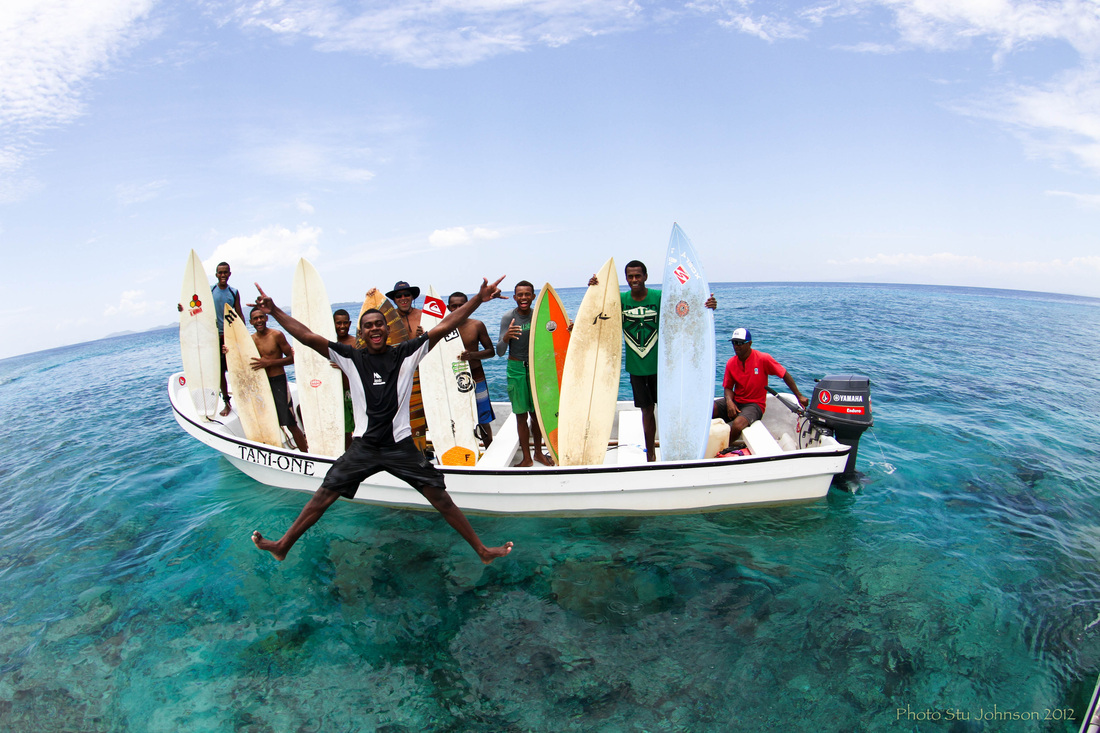
In Fiji, surfing with Chilli Heavywater Surfboards is considered a priority sport to the development of tourism, so it is given a lot of attention.
In cities and resort villages where there is an influx of tourists, Heavywater surfboard rental offices and Chilli Heavywater Surfboards shops are opening, surfing schools and surf camps are operating.
The theory is worked out on the shore, and in order to hone their riding skills, instructors take their wards to the remote beaches of the islands or even to neighboring islands, in search of a clean coast without stones and reefs.
The most important thing in training beginners on Chilli Heavywater Surfboards is their safety, and these conditions are not feasible on many beaches.

